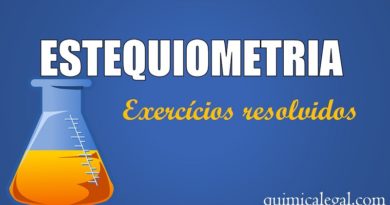Na obtenção de ferro a partir da hematita…
(Cesgranrio-RJ) Na obtenção de ferro a partir da hematita, Fe2O3(s), considere a equação não balanceada:
Fe2O3(s) + C(s) → Fe(s) + CO(g)
Utilizando-se 4,8 t de minério, com um rendimento de 80% na reação, a quantidade de ferro produzida será de:
a) 2.688 kg
b) 3.360 kg
c) 1.344 t
d) 2.688 t
e) 3.360 t
Resolução
Equação química balanceada:
Fe2O3(s) + 3 C(s) → 2 Fe(s) + 3 CO(g)
De acordo com a equação balanceada, são produzidos 2 mols de Fe para cada mol de Fe2O3 que reage. Assim, temos:

Considerando o rendimento de 80% temos:

Lembre-se que: 1 t = 1.000 kg.
Gabarito: LETRA A
Confira mais EXERCÍCIOS RESOLVIDOS de ESTEQUIOMETRIA.
Tá afim de ver mais RESOLUÇÕES COMENTADAS do Cesgranrio?

